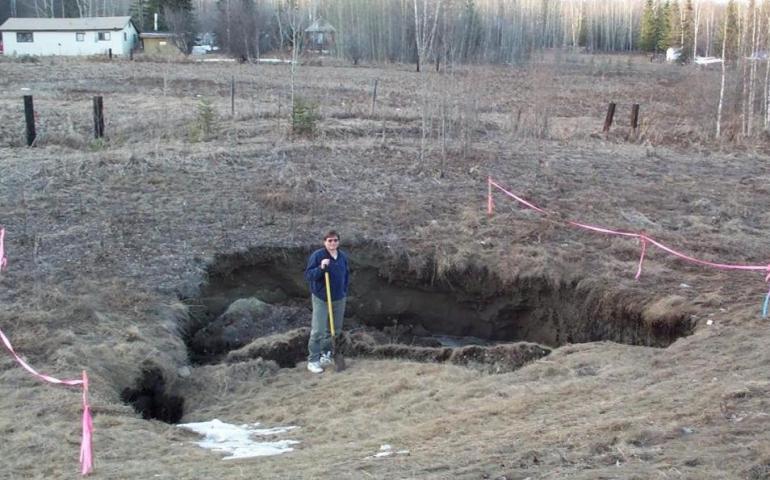
Rising permafrost temperatures could bring widespread thawing
University of Alaska Fairbanks scientists are presenting their work at the American Geophysical Union Fall Meeting in New Orleans this week. Here are some highlights of their research, as shared at the world’s largest Earth and space science meeting. Permafrost is a critical feature in high latitudes. As the planet warms, so does permafrost. Its thawing has significant consequences — greenhouse gases are released into the atmosphere, sinkholes form in the ground and infrastructure is damaged. Vladimir Romanovsky, a University of Alaska Fairbanks geophysics professor, presented his findings on permafrost warming in Alaska at the American Geophysical Union Fall Meeting on Dec. 12. In 2016, the latest year of complete records, the majority of Arctic observation sites reported the highest permafrost temperatures on record, he said. “It’s too soon to say that it will pass the melt threshold and we will start to see exciting change around us, but it’s already started to happen in some places,” Romanovsky said. “If this warming wave continues, we will see something interesting.” When permafrost gets disturbed by forest fires, construction or other forces, it is more susceptible to thaw. This change can lead to sinkholes and dramatic deformation of the surface as water drains away and soils collapse. “We now start to see these kinds of things happen in completely undisturbed conditions,” Romanovsky said. “That may be an indication that, at some locations, we are getting to the thawing threshold. If this threshold is crossed, we may see these kinds of things much more often and in more places.” n his talk, he explained that permafrost is a complex system. While permafrost is certainly warming, it is not happening in the same way everywhere. Permafrost temperatures are a result of a relationship between air temperature, snowfall and the timing of snowfall. Air temperature is what warms or cools permafrost. Snow is an insulator, like a blanket. To maintain permafrost, the ground has to be exposed to cold air long enough before snow falls. During warmer years or years when snow falls earlier, the snow insulates warmer ground, raising the temperature of permafrost. The end result is a complex record. On the scale of decades, permafrost in Interior Alaska has been warming. However, on smaller scales, it gone through periods of warming and cooling. Research has shown substantial permafrost warming in Alaska, from 0.3 to 3 degrees C, since the 1980s. However, in the mid-1990s through the beginning of the 2010s, permafrost in Interior Alaska began to cool, in some locations by as much as 0.3 degrees C at a depth of 15 meters. Now, Romanovsky said, temperatures are rising again. By 2017, there were new record highs for the entire period of permafrost temperatures in Interior Alaska, which could mean dramatic changes in the future. “Eventually it could be pretty damaging for infrastructure and ecosystems,” he said. “If this new wave continues, there is good probability we will start see to significant events in the next five years.” For more information on permafrost research, please visit the UAF Geophysical Institute Permafrost Laboratory website.





